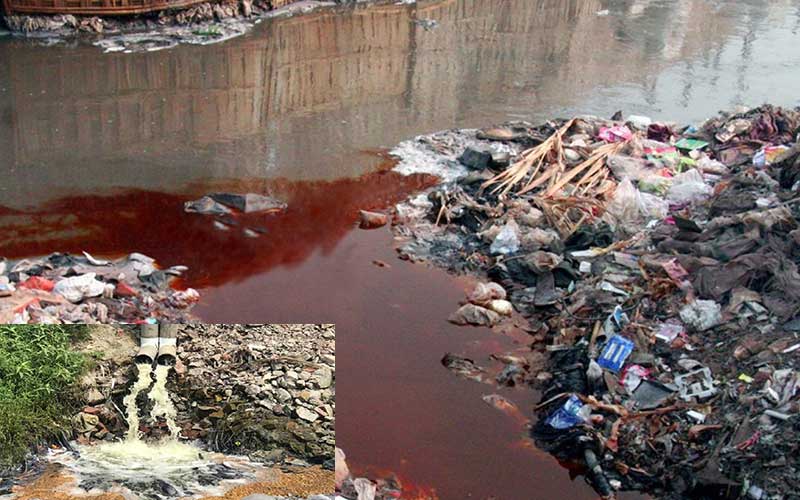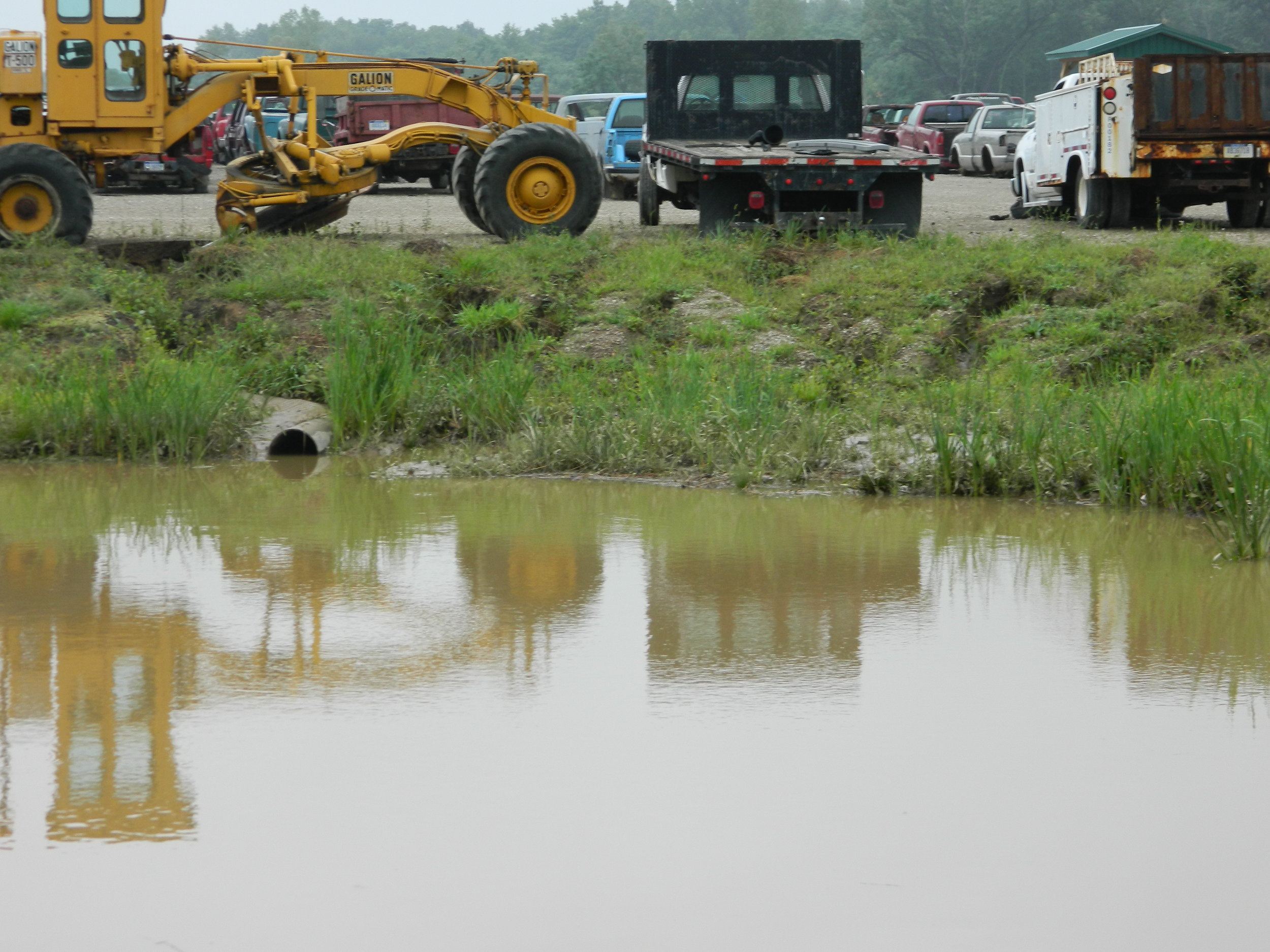Leading Industrial Wastewater Treatment Solutions: Guaranteeing Compliance and Efficiency
Leading Industrial Wastewater Treatment Solutions: Guaranteeing Compliance and Efficiency
Blog Article
Comprehending the Comprehensive Refine of Fluid Garbage Disposal: Finest Practices and Environmental Effect Factors To Consider
The monitoring of fluid garbage disposal is a multifaceted problem that requires a detailed understanding of numerous finest methods and their connected ecological effects. From the kinds of fluid waste created to the techniques employed for collection, therapy, and final disposal, each action plays a crucial duty in securing environments and public health. As regulatory standards develop and modern technology advancements, the conversation around these processes becomes significantly pertinent. What effects do these modifications hold for future sustainability initiatives, and exactly how can stakeholders guarantee that they are effectively attended to?
Kinds of Fluid Waste
Understanding the different sorts of liquid waste is necessary for effective management and disposal practices. Fluid waste can be generally categorized into a number of types, each requiring special handling and treatment techniques.
Industrial liquid waste usually has hazardous products, consisting of heavy metals, solvents, and chemicals, generated during making procedures. These wastes necessitate stringent regulative compliance to shield human health and wellness and the environment. Domestic liquid waste primarily describes wastewater generated from families, consisting of sewer and greywater, which, although much less harmful, can still present considerable threats if poorly managed.
Agricultural liquid waste, including runoff from ranches, typically has fertilizers and pesticides that can cause environmental degradation if not treated appropriately. Medical fluid waste, created from medical care centers, consists of contaminated fluids such as physical liquids and chemicals, calling for specialized disposal approaches to prevent infection and environmental contamination.
Last but not least, oil and grease waste, generally created by restaurants and auto industries, can create serious clogs in drain systems if not taken care of effectively. Recognizing these classifications assists in targeted approaches for therapy, compliance with guidelines, and reliable disposal approaches, ultimately advertising environmental sustainability and public health and wellness security.

Collection Techniques
Efficient collection methods are essential for the correct monitoring of fluid waste, making certain that it is gathered securely and effectively before treatment or disposal. Numerous methods are employed depending on the kind of liquid waste produced, the volume, and the particular qualities of the waste.
One common technique is making use of devoted collection tanks or sumps, which are made to catch fluid waste at the source. These systems often include pumps that help with the transfer of waste to bigger storage containers or therapy facilities. In addition, mobile collection units outfitted with vacuum modern technology are utilized in scenarios where waste is generated intermittently or in hard-to-reach areas.
For industrial settings, closed-loop systems can properly minimize spills and leaks, permitting the recuperation and reuse of liquid waste. It is additionally vital to educate workers on appropriate collection procedures to reduce dangers connected with hazardous compounds.
Furthermore, carrying out normal upkeep schedules for collection devices makes certain optimal performance and security. The assimilation of advanced tracking systems can improve collection performance by giving real-time data on waste degrees and prospective risks. In general, reliable collection methods are foundational to sustainable liquid waste management practices.
Treatment Processes
Treatment processes play an essential role in the administration of liquid waste, transforming possibly harmful materials right into risk-free effluents or multiple-use sources - liquid waste disposal. These procedures can be generally classified into physical, chemical, and organic techniques, each tailored to attend to details contaminants present in the waste stream
Physical treatment methods, such as sedimentation and purification, work by eliminating suspended solids and particulate issue. These strategies are often the primary step in the therapy chain, properly decreasing the tons on subsequent procedures. Chemical therapies include making use of reagents to neutralize harmful materials, speed up hefty metals, or oxidize natural contaminants, consequently boosting the safety of the effluent.
Organic therapy procedures, including activated sludge systems and anaerobic food digestion, important site take advantage of the natural abilities of microbes to break down organic matter. These approaches are especially efficient for wastewater including biodegradable contaminants. Advanced therapy technologies, such as membrane layer filtration and advanced oxidation procedures, are increasingly employed to attain higher levels of purification.
Including a mix of these treatment techniques not just ensures conformity with governing criteria but likewise advertises ecological sustainability by recouping important resources from fluid waste.
Disposal Options
How can companies make certain the accountable and safe disposal of fluid waste? Effective disposal choices are crucial for securing public wellness and the environment. The main approaches consist of land therapy, disposal, and incineration complied with by discharge right into metropolitan wastewater systems.
Land disposal entails the careful containment of liquid waste in assigned garbage dumps, making certain that it does not leach into surrounding soil or water. Incineration, on the other hand, subjects liquid waste to heats, converting it into ash and gases, which require proper filtering to reduce discharges. This method appropriates for contaminateds materials that can not be treated with conventional ways.
In situations where liquid waste can be treated, organizations may choose for biological or chemical therapy processes to reduce the effects of dangerous components before releasing the treated effluent right into local systems. This route generally aligns with discover this regulative demands, guaranteeing that the effluent fulfills safety criteria.
Eventually, organizations have to perform thorough analyses of each disposal option to identify its feasibility, considering factors such as waste make-up, regulative compliance, and prospective risks to wellness and the environment. By picking proper disposal techniques, companies can add to an accountable waste management strategy.
Ecological Influence
The environmental impact of liquid garbage disposal is an essential factor to consider for organizations seeking to decrease their environmental impact. Improper disposal approaches can bring about significant contamination of water resources, dirt deterioration, and adverse results on local ecological communities. For instance, unsafe fluids can seep into groundwater, presenting risks to alcohol consumption water products and aquatic life. Furthermore, the discharge of untreated or improperly treated waste into surface area waters can result in eutrophication, leading to oxygen depletion and the subsequent death of fish and various other organisms.

To alleviate these effects, organizations must adopt best practices such as executing rigorous waste treatment processes, advertising recycling site link and reuse, and sticking to regulative standards. By taking a positive method to liquid waste management, entities can significantly lower their ecological footprint while sustaining lasting growth objectives. Ultimately, a detailed understanding of the ecological influences linked with liquid garbage disposal is crucial for informed decision-making and accountable stewardship of natural sources.
Conclusion
Reliable management of liquid waste is vital for protecting ecological stability and public health. Inevitably, an extensive understanding of liquid waste disposal not only minimizes environmental effects however additionally promotes a dedication to liable resource management and environmental stewardship.
The management of fluid waste disposal is a multifaceted issue that needs a detailed understanding of numerous best methods and their connected ecological effects. From the types of fluid waste created to the approaches used for collection, therapy, and final disposal, each action plays an important duty in guarding ecosystems and public health.The ecological impact of liquid waste disposal is a vital consideration for organizations looking for to minimize their ecological footprint. Ultimately, a comprehensive understanding of the ecological influences linked with fluid waste disposal is crucial for educated decision-making and accountable stewardship of natural resources.
Ultimately, a comprehensive understanding of fluid waste disposal not only alleviates environmental impacts but also promotes a dedication to responsible resource management and environmental stewardship.
Report this page